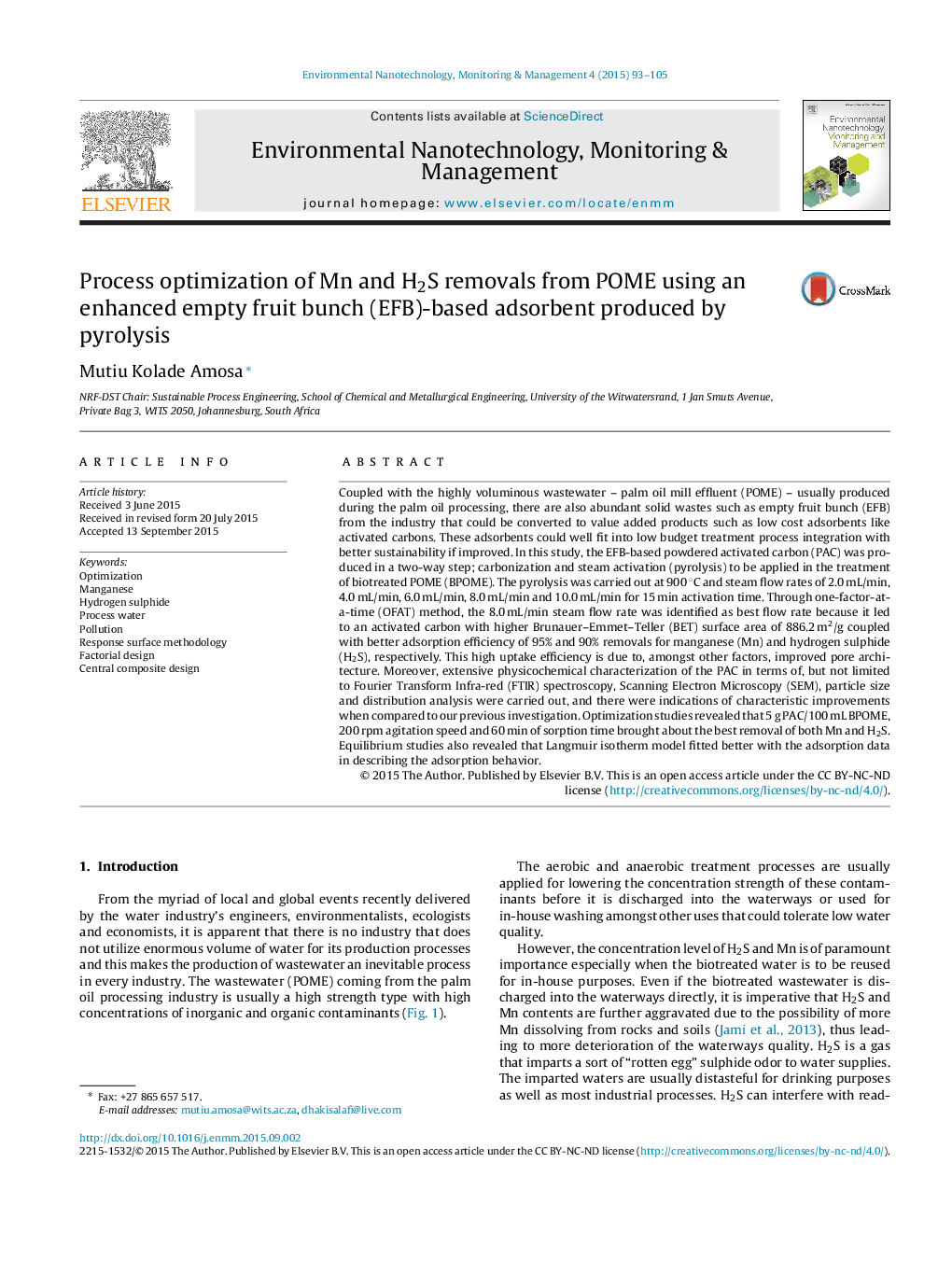| Article ID | Journal | Published Year | Pages | File Type |
|---|---|---|---|---|
| 4424211 | Environmental Nanotechnology, Monitoring & Management | 2015 | 13 Pages |
•Low-cost adsorbent with better characteristics was developed from biomass.•Unprecedented high surface area firstly achieved by physical activation.•Vital operating conditions were successfully optimized.•Monolayer adsorption successfully describes the adsorption behavior.•Treated wastewater could be safely reused as process water.
Coupled with the highly voluminous wastewater – palm oil mill effluent (POME) – usually produced during the palm oil processing, there are also abundant solid wastes such as empty fruit bunch (EFB) from the industry that could be converted to value added products such as low cost adsorbents like activated carbons. These adsorbents could well fit into low budget treatment process integration with better sustainability if improved. In this study, the EFB-based powdered activated carbon (PAC) was produced in a two-way step; carbonization and steam activation (pyrolysis) to be applied in the treatment of biotreated POME (BPOME). The pyrolysis was carried out at 900 °C and steam flow rates of 2.0 mL/min, 4.0 mL/min, 6.0 mL/min, 8.0 mL/min and 10.0 mL/min for 15 min activation time. Through one-factor-at-a-time (OFAT) method, the 8.0 mL/min steam flow rate was identified as best flow rate because it led to an activated carbon with higher Brunauer–Emmet–Teller (BET) surface area of 886.2 m2/g coupled with better adsorption efficiency of 95% and 90% removals for manganese (Mn) and hydrogen sulphide (H2S), respectively. This high uptake efficiency is due to, amongst other factors, improved pore architecture. Moreover, extensive physicochemical characterization of the PAC in terms of, but not limited to Fourier Transform Infra-red (FTIR) spectroscopy, Scanning Electron Microscopy (SEM), particle size and distribution analysis were carried out, and there were indications of characteristic improvements when compared to our previous investigation. Optimization studies revealed that 5 g PAC/100 mL BPOME, 200 rpm agitation speed and 60 min of sorption time brought about the best removal of both Mn and H2S. Equilibrium studies also revealed that Langmuir isotherm model fitted better with the adsorption data in describing the adsorption behavior.
Graphical abstractFigure optionsDownload full-size imageDownload as PowerPoint slide
